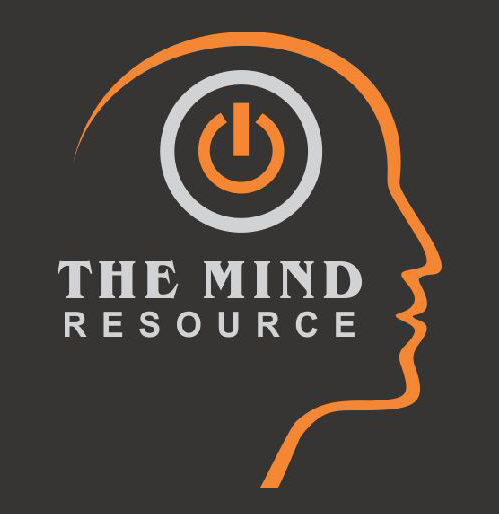Omega-3 fatty acids and their role in brain function
by Emily Zacherle
Have you ever heard a doctor, family member, friend or fellow gym member say “Make sure you take your omega-3s?” It seems to be one of the most common pieces of general health advice that we receive these days; but what exactly do omega-3s do for us? Well, it turns out that linoleic and alpha-linolenic acids, which are the building blocks of omega-3s, are essential fatty acids that play a vital role in several normal physiological processes in the body. To clarify, “essential” means that it’s a requirement that we consume these fatty acids in our diet because our bodies don’t produce them on their own. They can be found in certain types of seafood, dairy, juices, grains, nuts, vegetables and oils. Most of us know omega-3 fatty acids for their role in reducing inflammation and lowering the risk of heart disease, cancer, arthritis and other chronic diseases. However, omega-3s are highly concentrated in the brain and seem to influence both cognitive and behavioral function.
There is substantial evidence supporting the advantageous effects of increased omega-3s in improving learning and memory, as well as in combatting mental health disorders including but not limited to depression, mood disorders, schizophrenia, and dementia. Omega-3 fatty acids support synaptic responsiveness and moderate the expression of several molecules found on neural synapses which influence cognitive and behavioral function considerably. As a quick review, electrical signals travel from one neuron (brain cell) to the next and the space between these two neurons is called the synapse. Before these signals can enter the next neuron they have to pass through a cell membrane (i.e. neuron wall or cell wall), which is made up of approximately 20% essential fatty acids such as omega-3s. Within the cell membranes, ion channels open and close to control the flow of electrical signals to the next cell by changing their shape. It is theorized that omega-3s, in particular Docosahexaenoic acid (DHA), allows for more elasticity of these ion channels, meaning they can change shape more easily allowing signals to pass through the cell. If there is a deficiency of DHA, the human body will substitute another molecule, DPA (n-6), in its place. However, DPA (n-6) is less flexible than DHA making it more difficult for ion channels to change shape thereby hindering flow of electrical impulses from one cell to the next. Furthermore, DPA (n-6) substitution negatively influences the function of G-proteins, which allow for communication between the cells on the inside and outside of the cell membrane.
Let’s switch gears for a moment; during the third trimester and the first two years of life, the brain experiences a period of rapid growth and during this time sufficient nutrients are essential to brain function. DHA is of absolute importance during this time for normal development of cognitive, motor neural, sensory, and perceptual systems. While DHA has been shown to be essential in pre- and post-natal development, another common omega-3 fatty acid, eicosapentaenoic acid (EPA) has been shown to influence behavior and mood. Similar to DHA, EPA also functions exclusively through cell membranes. EPA’s importance in utero is not well understood, but studies have found that both EPA and DHA play a pivotal role in overall brain and motor development after birth. For example, studies evaluating children with developmental coordination disorder (DCD; aka dyspraxia) supplemented with omega-3 (EPA/DHA) and omega-6 (GLA) experienced triple the normal expected gain in spelling competency and a substantial improvement in behavior. These results support supplementing a current diet with EPA and DHA in children with DCD as these individuals exhibit impairments in learning, behavior, and physchosocial adjustment, which have some commonalities with ADHD and dyslexia that can persist throughout adulthood. Similar benefits have been seen in studies of ADHD, wherein improvements in attention, aggression and behavior have been reported in children receiving supplementation with omega-3s. Additional studies in children have also indicated benefits of taking omega-3s for those with clinical aggression and autism.
Importantly, benefits of omega-3s are not just limited to children. Studies in healthy adults have indicated improvements in cognition (attention and reaction time) and mood (vigor, anger, anxiety, etc.). More importantly, studies suggest that intake of omega-3s may lower dementia risk. In a long-term study, fish consumption was inversely related to incidence of dementia and risk of developing Alzheimer’s and a second study found and inverse relationship between high fish consumption and cognitive decline. However, study results over the past several decades are conflicting, making it difficult to draw conclusions from the multitude of evidence available. EPA and/or DHA have also shown promise for the treatment of Huntington’s disease, depression, bipolar disorder, schizophrenia, and borderline personality disorder in adults.
So there you have it, omega-3s serve a greater purpose than what many of us may have once thought. As more researchers continue to dig deeper into the evidence, who knows what else we may further learn about omega-3s. However, just like anything, consult with your doctor if you’re thinking about supplementing with omega-3s or increasing your fish intake to determine if it’s something that can provide you with long-term benefits. If you’re interested in learning more about foods high in omega-3, take a look at WebMD’s article, “Your Omega-3 Family Shopping List” located at: https://www.webmd.com/diet/guide/your-omega-3-family-shopping-list#1.
The above information was adapted from the following websites, articles and sources within each:
- University of Maryland Medical Center. Omega-3 fatty acids. Located at https://www.umm.edu/health/medical/altmed/supplement/omega3-fatty-acids. Accessed February 15, 2018.
- BBC. The Omega Wave. Located at http://www.bbc.co.uk/science/humanbody/mind/articles/intelligenceandmemory/omega_three.shtml. Accessed February 15, 2018.
- Kidd PM. Omega-3 DHA and EPA for cognition, behavior, and mood: clinical findings and structural-functional synergies with cell membrane phospholipids. Alternative Medicine Review. 2007;12(3).
- WebMD. Your Omega-3 Family Shopping List. Located at https://www.webmd.com/diet/guide/your-omega-3-family-shopping-list#1. Accessed February 16, 2018.

